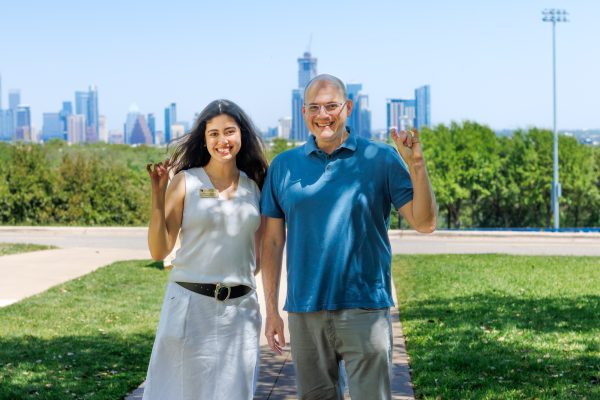Campus pushes paperless learning materials, study abroad application

As the world logs on to the information age, the Internet is constantly becoming a more accessible platform for innovation, and St. Edward’s University is taking advantage.
St. Edward’s is streamlining the way its students take on their world by meeting them where they spend so much of their time: the Internet. By making so many learning materials available online, teachers cut out the finite and costly resources that are wasted on hard copies.
No longer only for celebri-tweets and “Instagramming” bowls of cereal, smartphones are taking on an academic role as e-readers. In your pocket, you now have access to class notes, PowerPoints and syllabi, leaving virtually no excuse to ever miss assignments.
From homework to entire textbooks, St. Edward’s is undertaking an integration of digital learning technologies and environmental economics.
Amy Wright, a professor who teaches literature and civil rights courses, says she takes advantage of online materials to deliver assignments in a way that is accessible and comfortable for most students.
Wright said one difficulty of adaptation, though, has been the differences in perceptions of technology between some teachers and students.
“The gap between professors and students is always going to be about a decade gap at the minimum,” Wright said. “So you are dealing with a generational gap.”
This generational gap means that despite the growing role of technology in education, some professors prefer little to no online course components or use of technology in classrooms.
Blackboard makes is possible to keep track of assignments online while allowing students to print out a hard copy if necessary. Wright says Blackboard encourages teachers to make sure courses stay fluid and timely from year to year.
“It gives me a lot of freedom in terms of keeping the class fresh,” Wright said.
The push for sustainability and convenience is also elsewhere on campus. The Office of International Education will soon make it possible to apply to study abroad from the comfort of the Internet.
International Advisor Erin Garcia said she is confident the new site will improve the application experience.
“From the higher administration to us, we just wanted to make it easier for everyone,” Garcia said.
The Office of International Education has been transitioning from print to paperless applications in gradual steps over the last two years. The process will soon be complete with a web file that can be filled out completely online.
“[As far as] simplicity, access, ease of record keeping and ease of students being able to access the information, there have been a lot of benefits… so we’re heading in that direction,” Garcia said.
These changes will hopefully not only simplify the process of filling out the applications, but also facilitate their review by the Office of International Education. Garcia said the online application will launch by the end of September or earlier. This timeframe, though, makes for a tight squeeze for anyone intending to meet the Oct. 10 deadline for Spring 2012.






